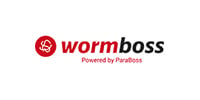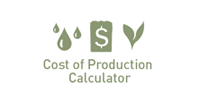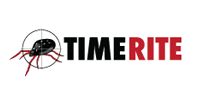Week 9 - August 2018
Eastern Market Indicator (EMI)
Eastern Market Indicator (EMI)
Microns
AWEX Auction Micron Price Guides
Sales held Wed 29th Aug & Thu 30th Aug 2018
Offering (Aust. Only)
Offering (Aust. Only)
Sales Week 9: 31st August 2018
Currency Movements
Currency Movements
Sales Week 9: 31st August 2018
Forecast
Forecast
Scheduled Australian Wool Auction Sales
AWI Commentary
After a minor halt in positive sentiment last week, Australian wool auction prices returned to a more stable and a slightly dearer tendency at this week’s unusually interrupted wool sales. Sales in Melbourne were delayed by one day due to a nearby factory fire denying access to sale rooms. As a consequence, the Melbourne wool sales did not conclude until Friday.
After selling each day at mostly slightly dearer levels, the AWEX (Australian Wool Exchange) EMI (Eastern Market Indicator) managed to add a handy 22ac or 1.06% for the elongated sales series to finish at 2080ac clean/kg. The EMI when expressed in USD was nullified almost fully by the impact of the movement of the USD v AUD forex (foreign exchange) rate. The USD EMI depreciated by just 4usc or 0.26% to 1517usc clean/kg.
The major adjustment this week from an overseas user’s perspective was again the changes in Euro levels. This currency moved another 1.18% lower against the AUD and follows on from the almost 3% fall last week. This has given some handy price advantages over the past fortnight to the European buyers, which has been opportune as the selection of types suitable for that market has started to become more prevalent in volume at auction.
The selling week featured a designated superfine sale ex Sydney where a very good number of clips were sourced from the New England, Goulburn/Yass districts of NSW with the odd South East Queensland clip. Considering the drought conditions that have prevailed through most of the growing year, the clips were exemplary in quality. The strength, style and crimp definition of most of these wools finer than 19 micron were of the highest standard and the growers should be proud of what they achieved in the most trying of circumstances.
Needless to say that most of the best examples of superfine wools ended up being purchased by the Italian connections and are bound for the high fashion houses of Europe and beyond. What was most pleasing though for local woolgrower sellers was the extremely good premium pricing of anywhere between 100 and 350 ac/clean kg above the market of general run of the mill types.
The falling wool supply at auction is becoming a little clearer as the season progresses. Anecdotal accounts of the lowering of the Australian wool offered at auction have some estimates ranging from 5% to over 10%. The extent of these numbers appear to be now plausible as the first six sale weeks of the new season have seen just 218,448 bales sold to the trade in comparison with 252,527 bales sold last year at the same time. This figure of 34,079 bales less sent to processing machinery this season represents a comparative shortfall of 13.5% so far in Australian wool, but it must be remembered that a higher than normal volume was seen at the same period last year which may be exaggerating that year on year comparison.
The biggest movers to the positive this week were the better Merino types bound for Europe and most descriptions finer than 19 micron. Quotes were a general 35 to 50ac higher for the week, whilst the Merino wools broader than 19 micron gained 5 to 10ac. The most action though was for carding wool types of all descriptions, which were exceptionally well sought.
Next week we have all three auction centres set to sell with a good volume of just short of 40,000 bales being offered. The AUD prices continue to be strong but just a slight slowing on the USD levels could signal a week of relative calmness before many within the industry trade representatives head to China for the 30th Annual Nanjing Wool Market conference in the week commencing 10th September.After selling each day at mostly slightly dearer levels, the AWEX (Australian Wool Exchange) EMI (Eastern Market Indicator) managed to add a handy 22ac or 1.06% for the elongated sales series to finish at 2080ac clean/kg. The EMI when expressed in USD was nullified almost fully by the impact of the movement of the USD v AUD forex (foreign exchange) rate. The USD EMI depreciated by just 4usc or 0.26% to 1517usc clean/kg.
The major adjustment this week from an overseas user’s perspective was again the changes in Euro levels. This currency moved another 1.18% lower against the AUD and follows on from the almost 3% fall last week. This has given some handy price advantages over the past fortnight to the European buyers, which has been opportune as the selection of types suitable for that market has started to become more prevalent in volume at auction.
The selling week featured a designated superfine sale ex Sydney where a very good number of clips were sourced from the New England, Goulburn/Yass districts of NSW with the odd South East Queensland clip. Considering the drought conditions that have prevailed through most of the growing year, the clips were exemplary in quality. The strength, style and crimp definition of most of these wools finer than 19 micron were of the highest standard and the growers should be proud of what they achieved in the most trying of circumstances.
Needless to say that most of the best examples of superfine wools ended up being purchased by the Italian connections and are bound for the high fashion houses of Europe and beyond. What was most pleasing though for local woolgrower sellers was the extremely good premium pricing of anywhere between 100 and 350 ac/clean kg above the market of general run of the mill types.
The falling wool supply at auction is becoming a little clearer as the season progresses. Anecdotal accounts of the lowering of the Australian wool offered at auction have some estimates ranging from 5% to over 10%. The extent of these numbers appear to be now plausible as the first six sale weeks of the new season have seen just 218,448 bales sold to the trade in comparison with 252,527 bales sold last year at the same time. This figure of 34,079 bales less sent to processing machinery this season represents a comparative shortfall of 13.5% so far in Australian wool, but it must be remembered that a higher than normal volume was seen at the same period last year which may be exaggerating that year on year comparison.
The biggest movers to the positive this week were the better Merino types bound for Europe and most descriptions finer than 19 micron. Quotes were a general 35 to 50ac higher for the week, whilst the Merino wools broader than 19 micron gained 5 to 10ac. The most action though was for carding wool types of all descriptions, which were exceptionally well sought.
Next week we have all three auction centres set to sell with a good volume of just short of 40,000 bales being offered. The AUD prices continue to be strong but just a slight slowing on the USD levels could signal a week of relative calmness before many within the industry trade representatives head to China for the 30th Annual Nanjing Wool Market conference in the week commencing 10th September.After selling each day at mostly slightly dearer levels, the AWEX (Australian Wool Exchange) EMI (Eastern Market Indicator) managed to add a handy 22ac or 1.06% for the elongated sales series to finish at 2080ac clean/kg. The EMI when expressed in USD was nullified almost fully by the impact of the movement of the USD v AUD forex (foreign exchange) rate. The USD EMI depreciated by just 4usc or 0.26% to 1517usc clean/kg.
The major adjustment this week from an overseas user’s perspective was again the changes in Euro levels. This currency moved another 1.18% lower against the AUD and follows on from the almost 3% fall last week. This has given some handy price advantages over the past fortnight to the European buyers, which has been opportune as the selection of types suitable for that market has started to become more prevalent in volume at auction.
The selling week featured a designated superfine sale ex Sydney where a very good number of clips were sourced from the New England, Goulburn/Yass districts of NSW with the odd South East Queensland clip. Considering the drought conditions that have prevailed through most of the growing year, the clips were exemplary in quality. The strength, style and crimp definition of most of these wools finer than 19 micron were of the highest standard and the growers should be proud of what they achieved in the most trying of circumstances.
Needless to say that most of the best examples of superfine wools ended up being purchased by the Italian connections and are bound for the high fashion houses of Europe and beyond. What was most pleasing though for local woolgrower sellers was the extremely good premium pricing of anywhere between 100 and 350 ac/clean kg above the market of general run of the mill types.
The falling wool supply at auction is becoming a little clearer as the season progresses. Anecdotal accounts of the lowering of the Australian wool offered at auction have some estimates ranging from 5% to over 10%. The extent of these numbers appear to be now plausible as the first six sale weeks of the new season have seen just 218,448 bales sold to the trade in comparison with 252,527 bales sold last year at the same time. This figure of 34,079 bales less sent to processing machinery this season represents a comparative shortfall of 13.5% so far in Australian wool, but it must be remembered that a higher than normal volume was seen at the same period last year which may be exaggerating that year on year comparison.
The biggest movers to the positive this week were the better Merino types bound for Europe and most descriptions finer than 19 micron. Quotes were a general 35 to 50ac higher for the week, whilst the Merino wools broader than 19 micron gained 5 to 10ac. The most action though was for carding wool types of all descriptions, which were exceptionally well sought.
Next week we have all three auction centres set to sell with a good volume of just short of 40,000 bales being offered. The AUD prices continue to be strong but just a slight slowing on the USD levels could signal a week of relative calmness before many within the industry trade representatives head to China for the 30th Annual Nanjing Wool Market conference in the week commencing 10th September.
Wool forwards report - Southern Aurora Markets
The forward markets traded in light volume as the spot market looked to steady after three volatile weeks to open the new season. Bidding improved as the week progressed and a few growers took advantage hedging 21.0 November at 2175 and December at 2160. 19.0 traded 2220 for February and 2200 for April. Interest in the fine wools at the spot auction has seen it flow into the new year forwards. Bidding for the Summer and into the new year could see trading for the 19.0 micron index reach 2250 presenting opportunities for growers.
AUD Commentary - Southern Aurora Markets
The small relief rally in the Aussie Dollar (AUD) following the change of Prime Minister did not last long, with the AUD topping out midweek at .7362, before hitting a wall and falling for three consecutive days to be trading this morning (Friday) at .7244, the new low for the week, and looking likely to re-test the years low of .7202 set only two weeks ago.
Data out today reinforced the concerns of the RBA and the market in general that growth in the economy has slowed, and therefore any rate rise by the RBA could be two years away as suggested by Westpac Bank. There are some economists even suggesting that if the cost of offshore funding to support the Australian Bank lending rises, as seen this week by Westpac’s hike in its home loan rates, then the RBA might indeed need to cut rates, clearly a negative for the value of the Australian Dollar.
Today’s Building approvals data surprised with a faster than expected fall of 5.2 percent, well below the 2.0 percent forecast, while Australia’s Private Capital Expenditure also unexpectedly fell, dropping 2.5 percent in the second quarter, in contrast to a 0.6 percent rise forecast. Giulia Lavinia Specchia, FX Strategist at ANZ Bank, says "there’s likely to be further declines in the Aussie ahead, with widening interest rate differentials vis-à-vis the USD, and rising risk with the US-China trade war. In our view, the global risk/growth backdrop will challenge cyclical currencies like the AUD, with the Aussie likely to fall below .7000 cents.
Technically the AUD is trading within the range of 0.7202/7381, however the bias is negative. The steep fall seen this week is likely to see a small relief rebound to possibly .7460, however a re-test of the .7202 low looks imminent. A break through that has a major support target of .6830.












